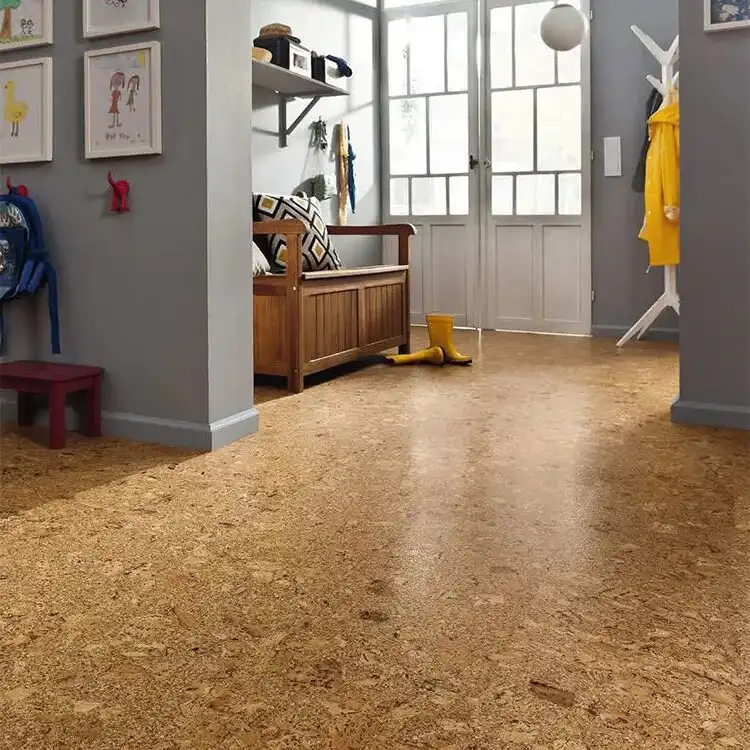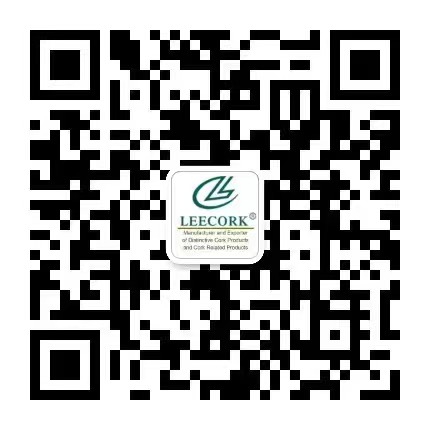Why Are Cork Floor Tiles the Secret to Eco-Friendly Home Design?
2025-08-19 16:40:48
In the world of sustainable home design, cork floor tiles have emerged as a game-changing solution that combines style, comfort, and environmental responsibility. These versatile tiles are revolutionizing the way we think about flooring, offering a unique blend of natural beauty and eco-friendly properties that make them the secret weapon in creating sustainable living spaces. Cork floor tiles are harvested from the bark of cork oak trees, a renewable resource that regenerates every nine years without harming the tree. This sustainable harvesting process, coupled with cork's natural ability to absorb carbon dioxide, makes it an exceptional choice for environmentally conscious homeowners and designers alike. Beyond their green credentials, cork tiles boast impressive acoustic and thermal insulation properties, creating comfortable and energy-efficient spaces. Their natural resilience and durability ensure long-lasting beauty, while their water-resistant qualities make them suitable for various areas of the home, including kitchens and bathrooms. As we delve deeper into the world of cork flooring, we'll discover why these remarkable tiles are quickly becoming the cornerstone of eco-friendly home design, offering a perfect synthesis of sustainability, functionality, and aesthetic appeal.

The Sustainable Journey: From Tree to Tile
The story of cork floor tiles begins in the cork oak forests of the Mediterranean, where centuries-old harvesting techniques have been perfected to ensure the longevity of both the trees and the industry. Unlike other wood products, cork is harvested without felling trees, making it one of the most sustainable flooring options available.
The Harvesting Process
Cork oak trees are first harvested when they reach 25 years of age, and then every 9 years thereafter. This cyclical process allows the tree to regenerate its bark naturally, ensuring a continuous supply of cork without damaging the ecosystem. The harvesting is done by skilled workers who carefully peel the bark by hand, a technique that has remained largely unchanged for generations.
From Raw Material to Finished Product
Once harvested, the cork bark is left to dry for several months before being boiled and flattened. It's then cut into thin sheets or ground into granules, depending on the final product. For floor tiles, the cork is typically ground and mixed with eco-friendly binders to create a durable, resilient material. This process ensures that every part of the harvested cork is utilized, minimizing waste and maximizing efficiency.
Environmental Impact
The production of cork floor tiles has a remarkably low environmental impact. Cork oak forests act as natural carbon sinks, absorbing millions of tons of CO2 each year. Moreover, these forests support a rich biodiversity, providing habitats for numerous species, some of which are endangered. By choosing cork flooring, consumers are directly supporting the preservation of these vital ecosystems.
Cork Flooring: Comfort Meets Environmental Responsibility
The appeal of cork floor tiles extends far beyond their eco-friendly origins. These innovative flooring solutions offer a unique combination of comfort and performance that sets them apart in the world of sustainable home design.
Unparalleled Comfort Underfoot
Cork's natural cellular structure gives it a unique springiness that makes it incredibly comfortable to walk on. This inherent cushioning effect reduces strain on joints and muscles, making cork flooring an excellent choice for areas where you spend a lot of time standing, such as kitchens or home offices. The natural warmth of cork also ensures that your floors remain comfortable year-round, unlike colder materials like tile or stone.
Acoustic and Thermal Insulation
One of the most impressive features of cork flooring is its excellent insulation properties. Cork's cellular composition makes it a natural sound absorber, reducing noise transmission between rooms and floors. This acoustic insulation can significantly improve the overall comfort of your living space, especially in multi-story homes or apartments. Additionally, cork's thermal insulation properties help maintain a consistent indoor temperature, potentially reducing heating and cooling costs.
Durability and Maintenance
Despite its soft feel, cork is surprisingly durable. Its natural elasticity allows it to bounce back from impacts, resisting dents and scratches that would mar other flooring types. Many waterproof cork flooring options are also available, making it suitable for use in kitchens and bathrooms. With proper care and maintenance, cork floor tiles can last for decades, further enhancing their sustainability credentials.
Health Benefits
Cork flooring offers several health benefits that contribute to a cleaner, healthier home environment. It's naturally hypoallergenic and resistant to mold, mildew, and pests, making it an excellent choice for allergy sufferers. The antimicrobial properties of cork also help to maintain a more hygienic living space, reducing the proliferation of harmful bacteria.

Transforming Spaces: Cork's Versatility in Modern Interiors
The aesthetic versatility of cork floor tiles is one of their most compelling features, allowing them to seamlessly integrate into a wide range of interior design styles. From rustic to modern, cork flooring can enhance any space with its unique texture and warm, natural tones.
Design Flexibility
Cork floor tiles come in a variety of colors, patterns, and finishes, offering endless design possibilities. Natural cork tones range from light beige to rich amber, but tiles can also be stained or painted to achieve virtually any color. The texture of cork can vary from smooth and uniform to more rustic and varied, allowing you to choose the perfect look for your space. Some manufacturers even offer cork tiles with printed designs, mimicking the appearance of other materials like wood or stone while retaining all the benefits of cork.
Complementing Different Architectural Styles
The chameleon-like quality of cork flooring allows it to complement a wide range of architectural styles. In modern, minimalist interiors, sleek cork tiles in neutral tones can provide a warm counterpoint to clean lines and open spaces. In more traditional settings, cork's natural variations and warm hues can add depth and character. The versatility of cork even extends to commercial spaces, where its durability and acoustic properties make it an excellent choice for offices, restaurants, and retail environments.
Creating Cohesive Design Schemes
Cork's neutral palette makes it easy to create cohesive design schemes throughout your home. The same cork flooring can flow seamlessly from living areas to bedrooms, creating a sense of continuity and spaciousness. In open-plan layouts, cork flooring can help define different functional areas while maintaining a unified look. The natural warmth of cork also pairs beautifully with a wide range of materials, from wood and stone to metals and fabrics, allowing for creative and harmonious interior design.
Innovative Applications
Beyond traditional flooring, cork tiles are finding innovative applications in interior design. They can be used as wall coverings to add texture and warmth to a space while improving acoustics. Some designers are even using cork tiles to create unique furniture pieces or decorative elements, showcasing the material's versatility and sustainability in new and exciting ways.
In conclusion, cork floor tiles represent a perfect synthesis of sustainability, comfort, and style in modern home design. Their journey from the cork oak forests to our homes is a testament to the possibilities of eco-friendly manufacturing. The unparalleled comfort and performance they offer make them a smart choice for health-conscious and environmentally responsible homeowners. And their design versatility ensures that they can enhance any interior space, from traditional to contemporary.
As we continue to seek out sustainable solutions for our living spaces, cork floor tiles stand out as a truly revolutionary option. They remind us that we don't have to sacrifice style or comfort to make eco-friendly choices. Instead, by choosing cork, we can create beautiful, comfortable homes that also contribute to a healthier planet.
If you're ready to transform your space with the secret weapon of eco-friendly home design, look no further than Xi'an Leecork Co., Ltd. Since 2002, we've been at the forefront of cork product manufacturing, supplying high-quality cork floor tiles to clients in over 64 countries worldwide. Our expertise and commitment to sustainability have made us a trusted partner for individual buyers, corporate purchasing staff, and offline store owners alike. Whether you're renovating a single room or outfitting an entire commercial space, our range of cork flooring solutions can meet your needs while aligning with your environmental values. Don't miss the opportunity to be part of the sustainable design revolution. Contact us today at info@leecork.com to explore how our cork floor tiles can elevate your space and your commitment to eco-friendly living.
References
1. Cork Oak Landscapes: A Natural Solution to Climate Change (World Wildlife Fund, 2019)
2. Sustainable Materials for Green Building: A Guide to Cork Flooring (Green Building Council, 2020)
3. The Acoustic Properties of Cork Flooring in Modern Architecture (Journal of Sustainable Architecture, 2018)
4. Cork Flooring: A Comprehensive Analysis of Environmental Impact and Indoor Air Quality (Environmental Science & Technology, 2021)
5. Design Trends: The Rise of Cork in Contemporary Interiors (Architectural Digest, 2022)
6. The Health Benefits of Natural Flooring Materials: A Comparative Study (Journal of Environmental Health, 2020)
You May Like
0Related Industry Knowledge


